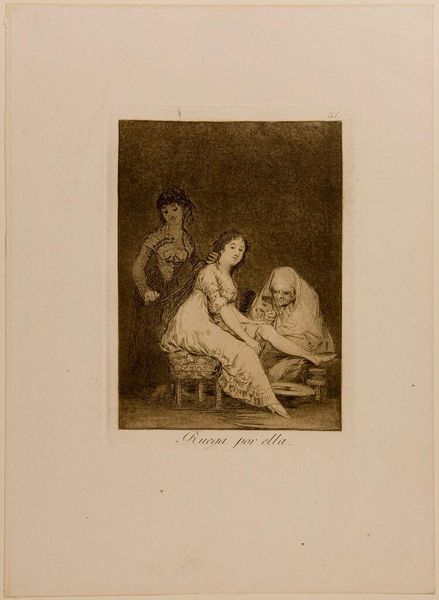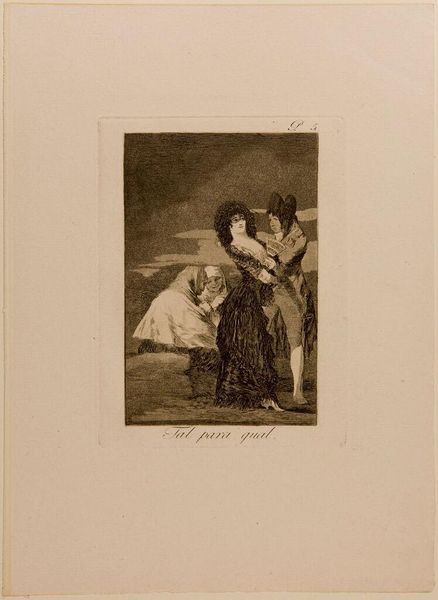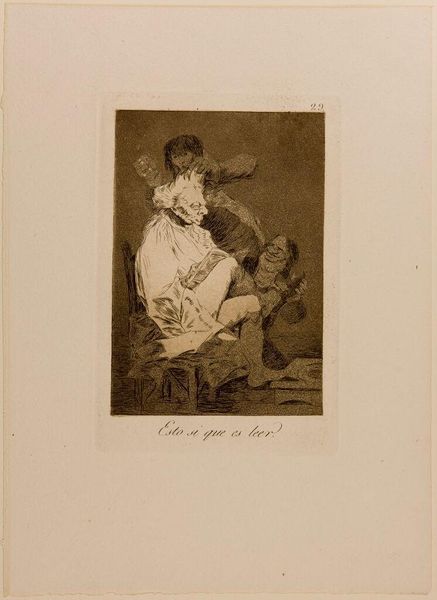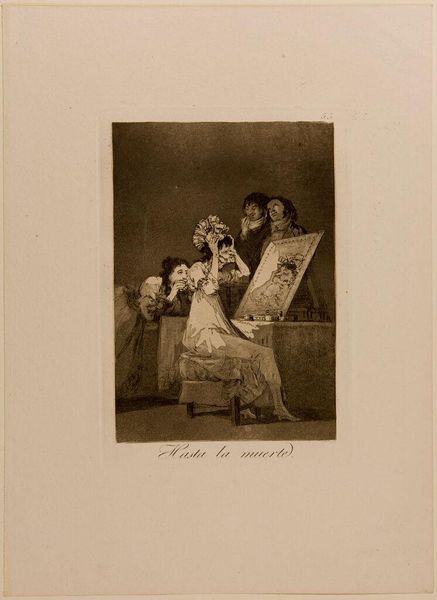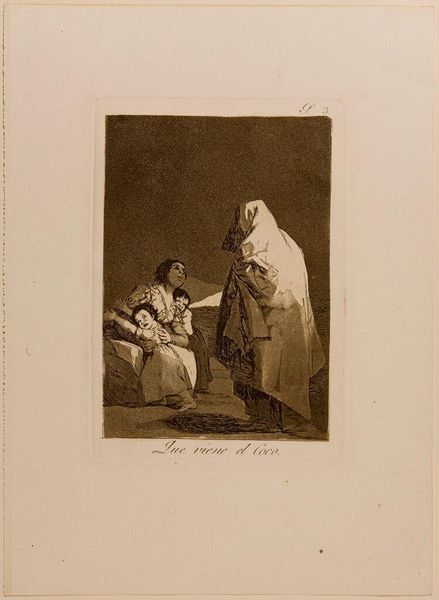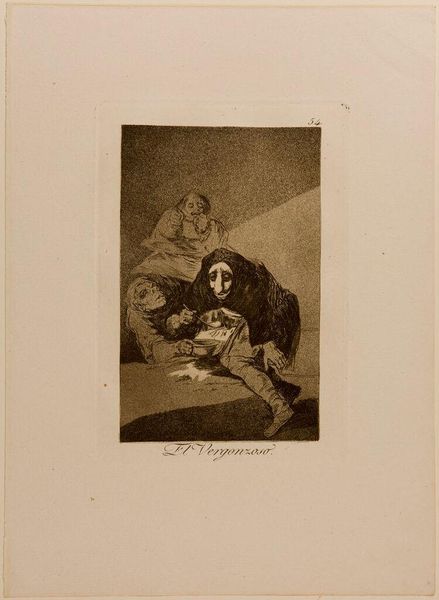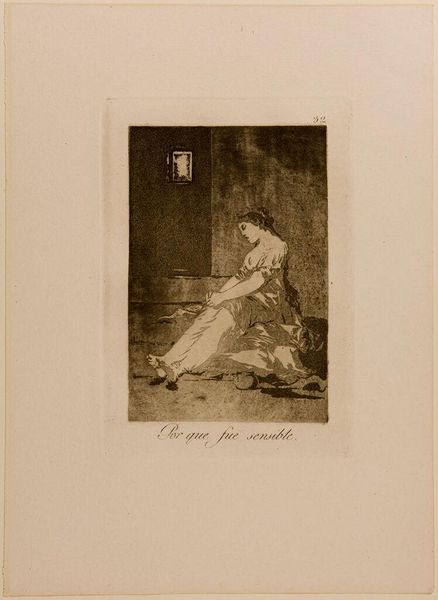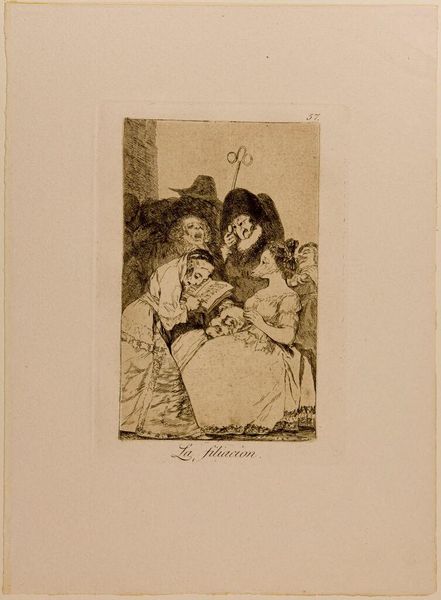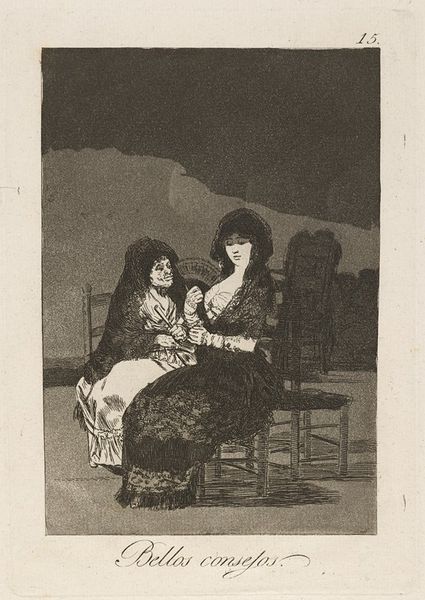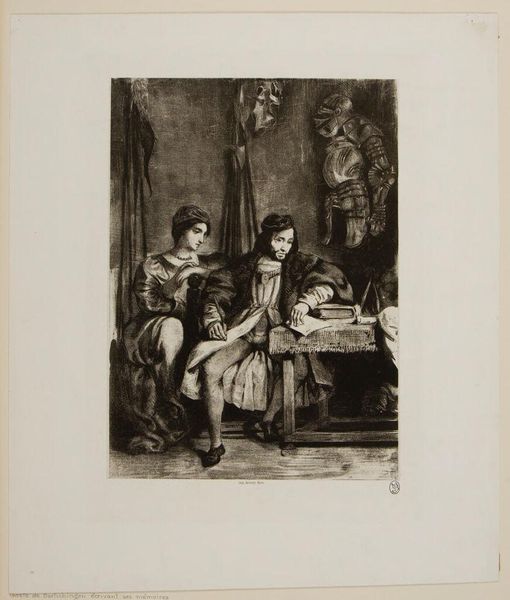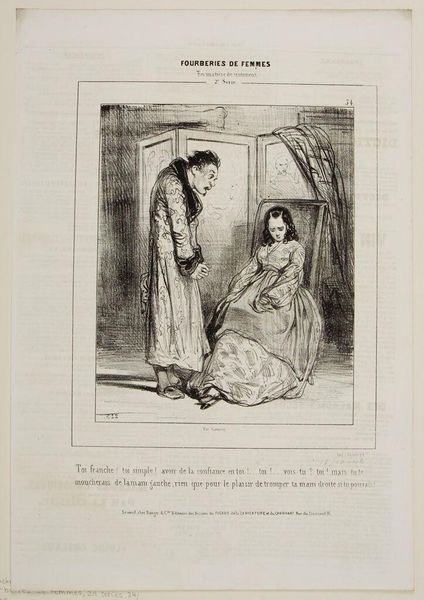
Copyright: CC0 1.0
Curator: This is Francisco Goya’s print, “Pretty Teachings,” which can be found here at the Harvard Art Museums. Its etching captures a rather intriguing scene. Editor: Yes, it’s quite stark, isn’t it? The aquatint is so heavy, giving it a shadowy, almost oppressive feel. Is it meant to be ominous, even? Curator: Well, Goya often used imagery to critique social norms. These women, adorned in finery, might represent the superficiality of societal teachings. The dark background could symbolize ignorance or moral decay. Editor: The lace, the fabric--these details, rendered through aquatint, speak volumes about the labor involved, the consumption it encourages. It’s a commentary on class and privilege, wouldn’t you say? Curator: Precisely. Goya uses the visual language of dress and setting to offer a layered critique of the values being passed down through generations. Editor: It’s compelling to consider the material realities that underpin such "pretty teachings." The very process of creating this print highlights the tension between surface beauty and underlying social critique. Curator: Indeed. It’s a powerful reminder of how appearances can both conceal and reveal deeper truths. Editor: A fitting testament to Goya's sharp eye for the human condition.
Comments
No comments
Be the first to comment and join the conversation on the ultimate creative platform.

